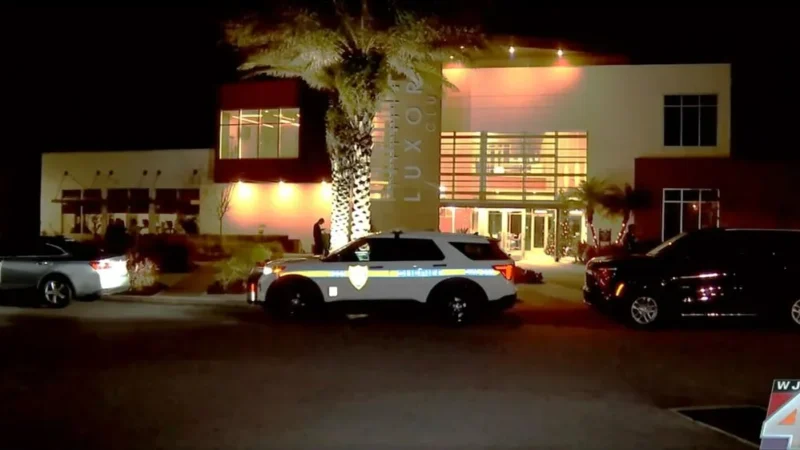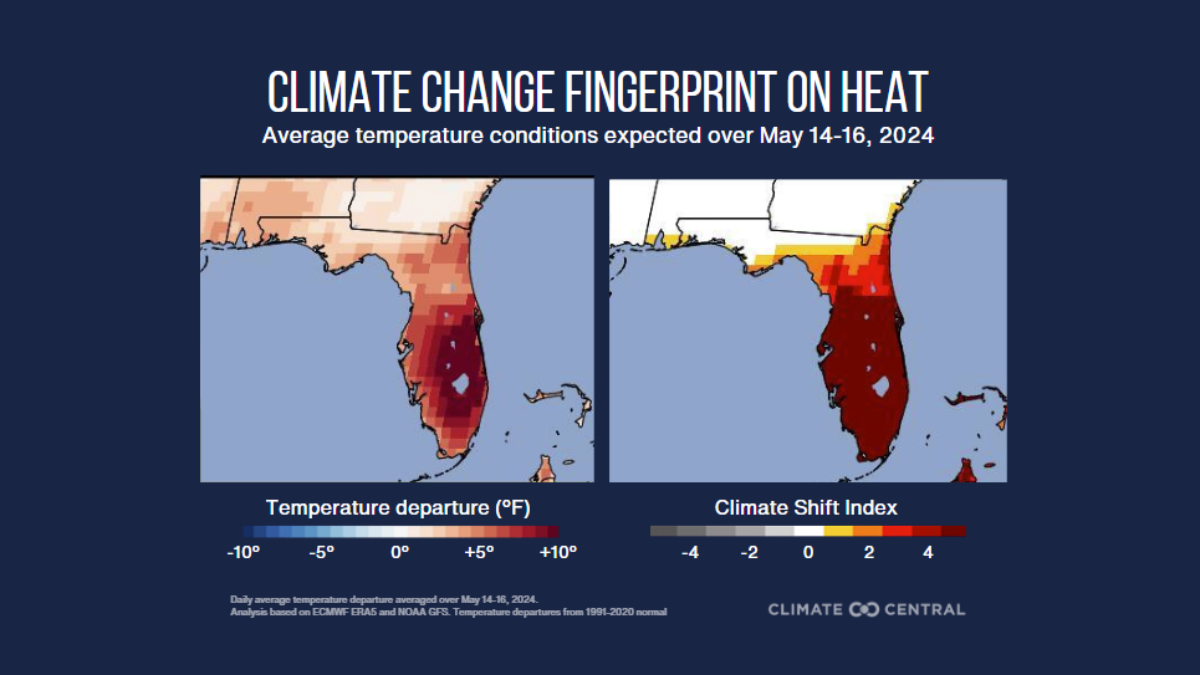Two weeks ago, the city of Jacksonville bulldozed a few oak trees that lived near the corner of Hogan Street and Independent Drive, explaining via social media that these Live Oaks occupied “the same location that is scheduled for the Community Services Building, playground and splash pad” and therefore,“could not be protected.”
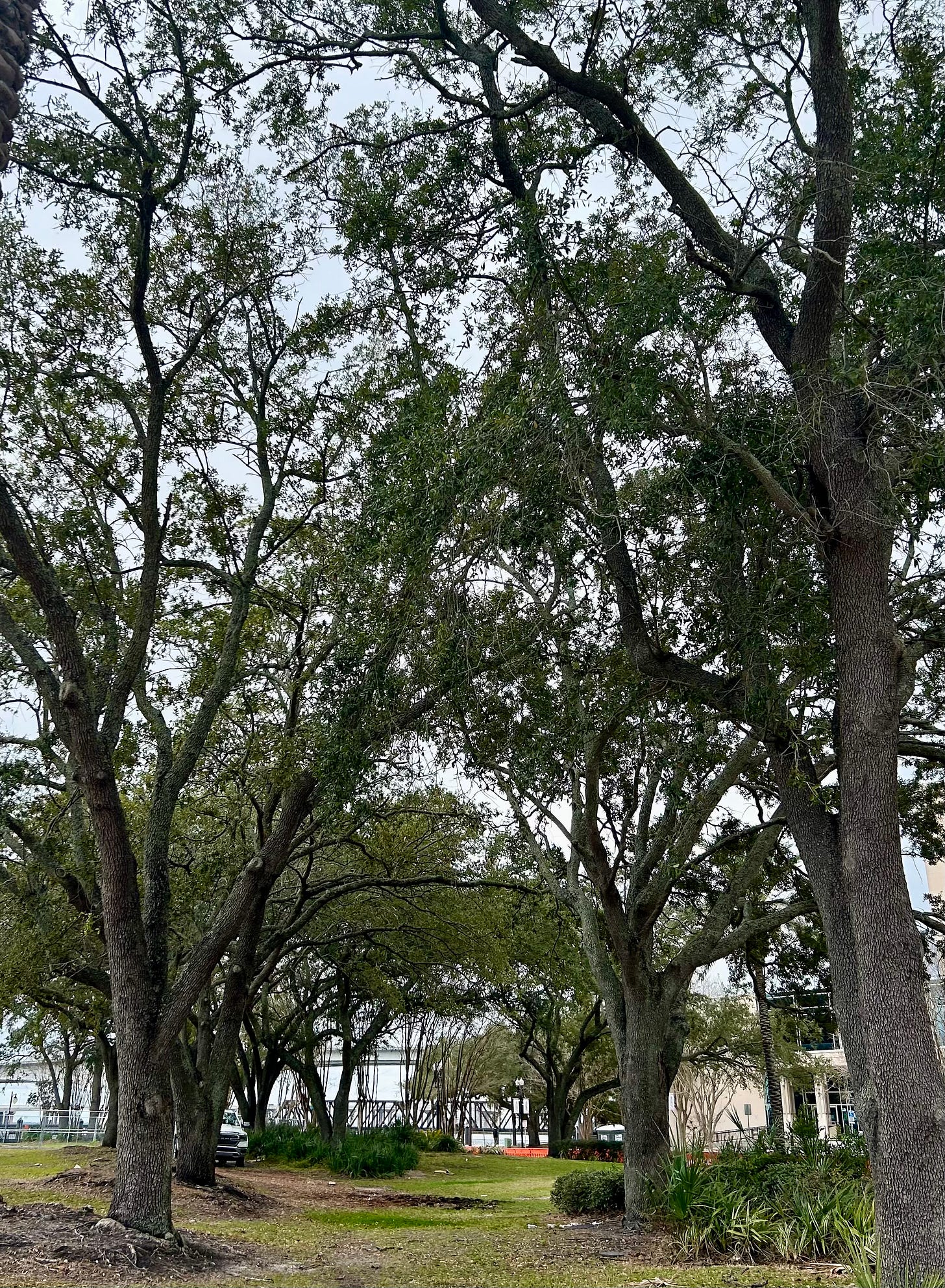
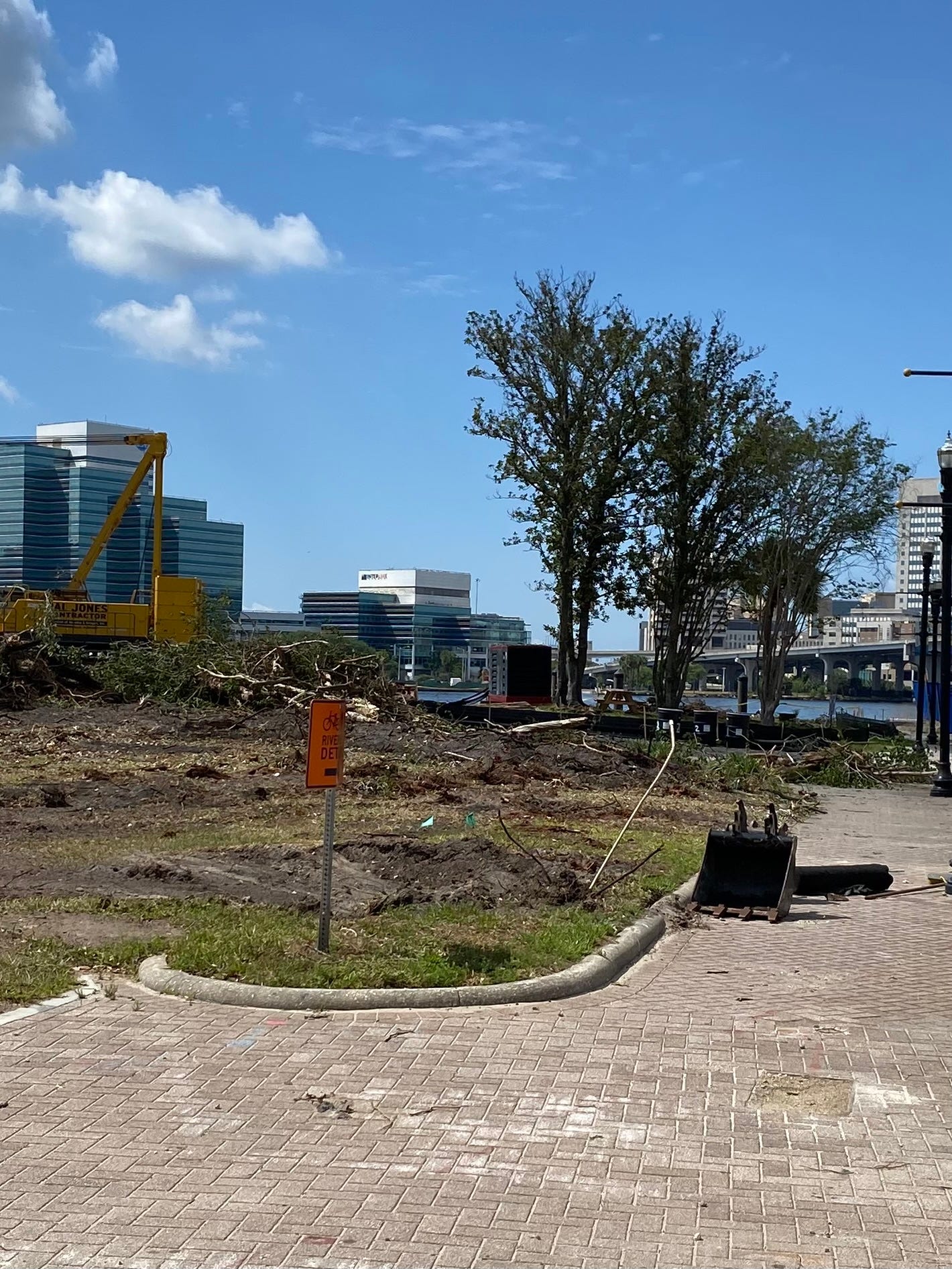
Not to worry.
The Riverfront Plaza park design, the city posted, calls for planting 308 trees on the former Landing site, including 78 live — as opposed to dead — oaks. Shade trees aplenty.
A cool plan
All well and good, this Parks Department plan.
Our historic Downtown “heat island” desperately needs shade trees, the only natural living beings willing and able to help us create an oasis in what otherwise is a hot-and-getting-hotter concrete desert. Without help from these symbiotic friends, our former Landing site will be four scattered air conditioned, heat-producing buildings situated around a grass lawn.
Not too cool.
To remind us of our elementary school lessons, trees are living, breathing natural wonders. They breathe in carbon and breathe out oxygen. Water evaporates from their leaves, helping cool surrounding air. And they provide shade, which cools the ground by as little as 10 and as much as 25 degrees Fahrenheit, protecting insects and humans alike, making them a critical feature when constructing urban commercial space.
We’re expecting . . . when?
According to the Parks Department’s landscape drawings, Southern live, nuttall, overcup, and cathedral live oaks; Mexican sycamores; dwarf Southern and sweetbay magnolias; winged and American elms; bald cypress; and, of course, palms are among the 22 tree species expected to be planted, in two phases, at the former Landing site.
Sounds lovely.
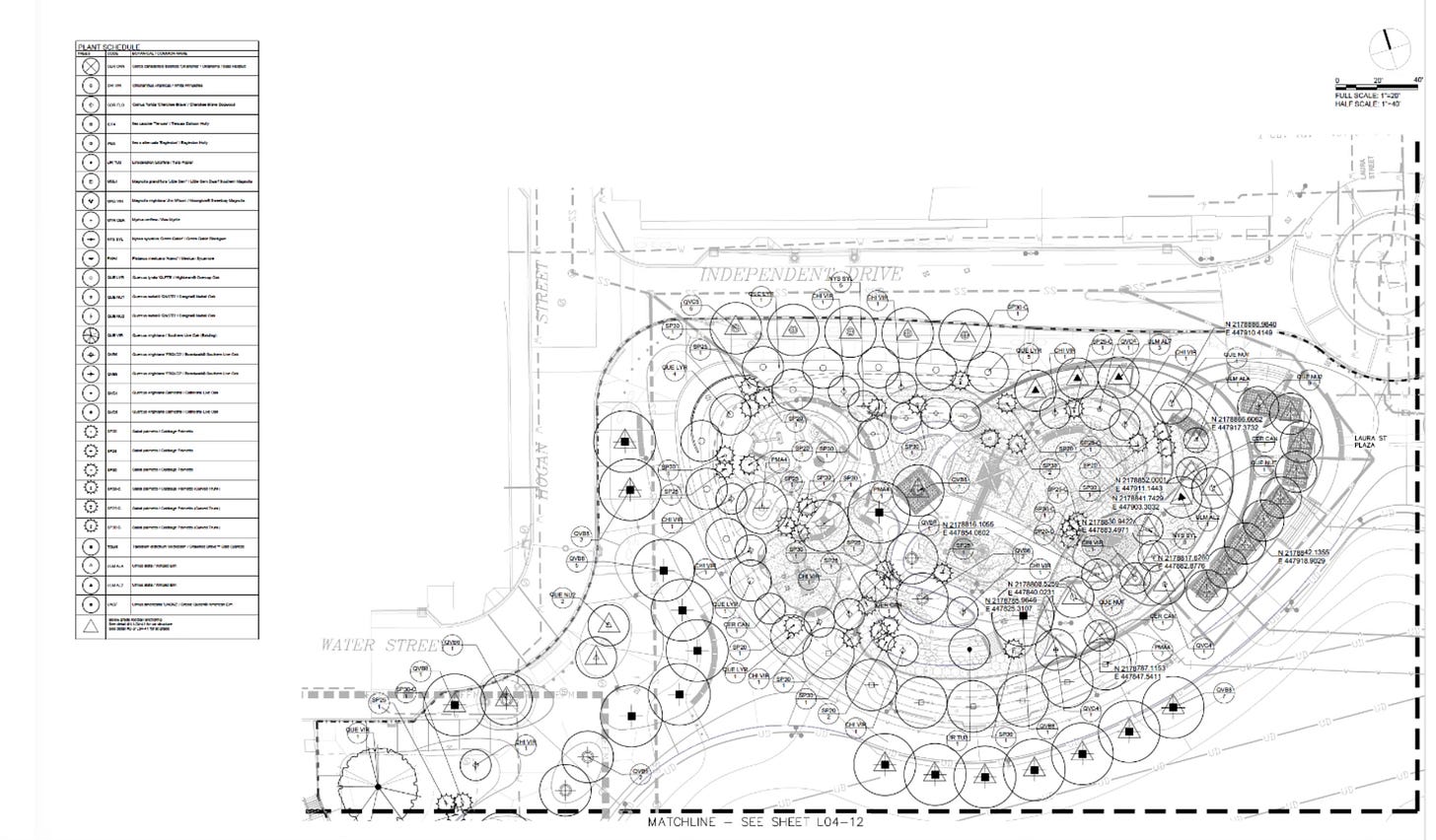
It’s late, folks
Given the time a young tree needs to mature into a carbon-sucking, shade-producing machine, our chance to nurture North Florida’s native plants, birds, and insects, not to mention create an outdoor respite from deadly heat for Downtown human residents and workers, grows short.
Indeed, our opportunity to invite much-needed nature into an excessively hot historic Downtown continues to evaporate as another hotter-than-normal, humid summer begins. Every time, every place we plant asphalt, concrete, and an air conditioned building, we multiply the production of heat, ensuring our urban core becomes increasingly inhospitable.
Our heat island is no paradise.
Due date?
Trees, we know, grow at different rates, reaching maturity over different time periods. With the chosen species, a proxy expectation might be that these trees will grow some 1 to 2 feet annually, and, depending on their size when planted, begin producing significant shade a decade from now.
When, then, will we start? When will we plant 308 trees on the former Landing site? After all, we’ve been expecting for a while.
It’s complicated
As with all things associated with redeveloping the former Landing site, simple questions elicit complicated answers.
The trees planned for the Landing site’s western half, called Phase I development, must wait for the Community Services Building and children’s playground, currently under construction and scheduled for completion sometime next year. This construction doesn’t account for the recently approved water’s edge restaurant, whose architect the Downtown Investment Authority is in the process of choosing.
After which, designs and permits must be approved, no doubt further delaying realization of some of the promised 308 trees.
Additional complications
The property’s eastern half, so-called Phase II, is another story.
DIA continues to discuss soliciting private development of a mid- to high-rise residential tower on the property’s northeast corner. This project, unlike the Landing site’s live oaks, is not dead. It’s simply waiting for the DIA’s board to decide on when to let developers know the property is once again available.
To further justify the tower, DIA staff argues that the riverfront park—think trees and shrubs—depends upon commercial mid-to-high rise development because the building’s tax production will support the park.
Silly us. Here we thought the city budget’s general fund, with a line item called Parks Department, funds parks.
If DIA offers the proposed commercial pad to developers, we can expect a good three years to transpire before the northeast corner tower is completed, so a careful read of DIA meeting minutes show.
In other words, despite the Parks Department’s social media post promising 308 trees representing 22 species, don’t hold your breath. These trees won’t transpire on you anytime soon. Besides, the Phase II park construction — wait for it — is not funded.
Given tree growth and maturity rates, and the need to fund the park, 2040 is looking like a safe projected date for 308 trees to produce much needed shade in historic Downtown.
Tick-tock, tick-tock
While private commercial development can be a good thing, it is not by definition a public good. And especially not when we’re determined to lay down concrete and asphalt everywhere. It’s why folks insist on local rules designed to preserve certain public properties — parks held in common, wetlands that improve water quality and sustain fish and wildlife, the public’s access to publicly owned waterways, tree zones.
And it’s why folks insist on public funding of parks. They represent a commonly held asset, providing much needed respite from hot-tempered Mother Nature.
Keep fighting
Riverfront park advocates may think their efforts fall on deaf ears, and with good reason. Some DIA board members persist in characterizing these tireless advocates as folks who just want grass and more grass at the former Landing site. Nothing could be further from the truth.
The good news is we have a former Landing site tree plan. The bad news: time’s a-wasting.
DIA meets next on June 20. Encourage the board to finally kill any commercial development on the northeast corner, just as their development plans felled the live oaks near Hogan and Independent. This building is a bad idea, getting worse every summer.
A historic Downtown riverfront park should not be held hostage to commercial development. If City Council members have trouble understanding the obvious, ask them to walk around Downtown in mid-July. Maybe then a majority of them will join the riverfront parks advocates, instruct DIA to kill the northeast corner development nightmare and fund the Parks Department’s tree plan posthaste.
Next meeting
If you cannot attend DIA’s June 20 meeting, send them a note and copy the mayor and city council members.
- https://dia.coj.net/about/DIA-Board-of-Directors
- https://www.jacksonville.gov/city-council/city-council-members
Sources:
- https://drive.google.com/drive/folders/1Q6hIWhZz3lGhlpmy4NkOAB1YCHBxafnR
- https://8billiontrees.com/gardening/how-long-does-it-take-for-a-tree-to-grow/#:~:text=Some%20trees%2C%20like%20the%20Sugar,90%25%20of%20their%20mature%20height.
This column appears in partnership with the JaxLookout.





